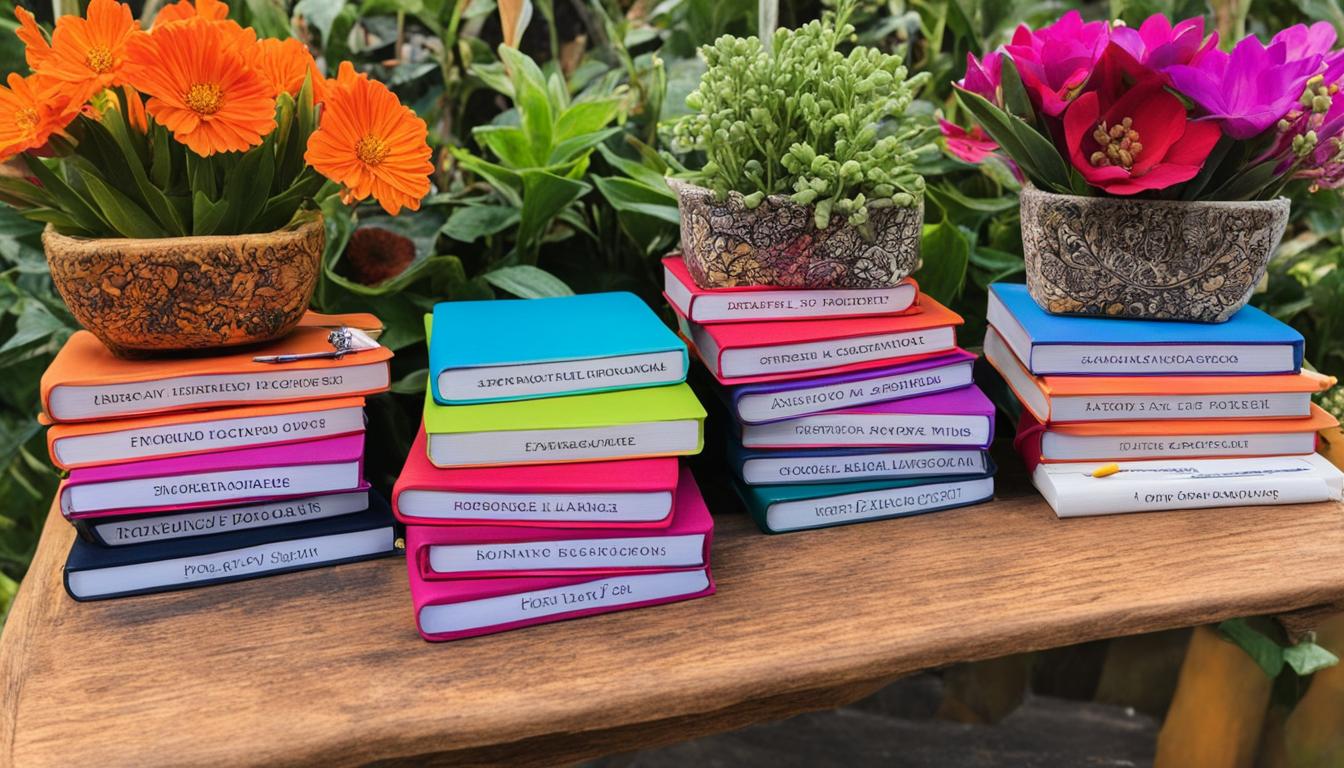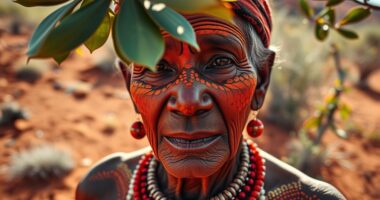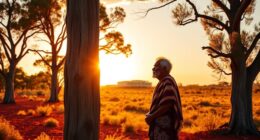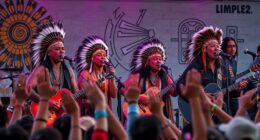We are excited to share our article highlighting the revival of the palawa kani Tasmanian language! We take pleasure in showcasing the incredible efforts to bring back this indigenous Tasmanian language, preserving the deep legacy of the Tasmanian Aboriginal culture.
For decades, the Tasmanian Aboriginal Centre has been at the forefront of the palawa kani Language Program, working tirelessly to reconstruct the original Tasmanian Aboriginal languages. This linguistic endeavor has resulted in the creation of palawa kani, a composite language that encapsulates the diverse linguistic heritage of Tasmania’s Aboriginal people.
Through the revival of palawa kani, the Tasmanian Aboriginal community is reclaiming its identity, reviving a vital part of its heritage, and fostering a sense of cultural pride and belonging. Join us as we delve into the history of Tasmanian Aboriginal languages, the process of language reconstruction, and the impact of palawa kani on the community and beyond.
Key Takeaways:
- Palawa kani is a composite language created to revive the original Tasmanian Aboriginal languages.
- There were between 8 and 16 different languages spoken by the Aboriginal people of Tasmania before colonization.
- Linguistic methods have been used to reconstruct the Tasmanian Aboriginal languages.
- Primary source records, such as journals and oral traditions, have been crucial in the revival process.
- The use of palawa kani has brought cultural pride and identity to the Tasmanian Aboriginal community.
The History of Tasmanian Aboriginal Languages
Before the British invasion, the Aboriginal people of Tasmania spoke between 8 and 16 different languages. These original Tasmanian languages were an integral part of the rich cultural heritage of the Aboriginal Tasmanians. However, the arrival of the British colonizers had devastating consequences for the Tasmanian Aboriginal languages.
Due to colonization and the forced removal of Aboriginal Tasmanians from their land, the languages faced severe decline and eventual extinction. The last native speaker of any of the original Tasmanian languages, Fanny Cochrane Smith, passed away in 1905. With her passing, an important part of Tasmania’s linguistic diversity was lost.
However, efforts have been made to revive and reconstruct the Tasmanian Aboriginal languages. These endeavors draw on historical records and the oral traditions of the Aboriginal community. By piecing together fragments of language and cultural knowledge, linguists and language workers have created palawa kani, a composite language that represents the ancestral languages of Tasmania.
“The revival of palawa kani gives us the opportunity to reconnect with our roots and preserve the cultural heritage of the Aboriginal Tasmanians.” – Representative from the Tasmanian Aboriginal Centre
The revival of the Tasmanian Aboriginal languages holds great significance for the Aboriginal Tasmanian community. It provides a link to their ancestors and offers a chance to reclaim their cultural identity. Through the use of palawa kani, the original Tasmanian languages are being kept alive, ensuring that the traditions, stories, and knowledge of the Aboriginal Tasmanians are preserved for future generations.
In the next section, we will explore the process of language reconstruction and the methods used to revive the Tasmanian Aboriginal languages.
The Process of Language Reconstruction
Reconstructing the Tasmanian Aboriginal languages has been a complex and intricate endeavor. At the Tasmanian Aboriginal Centre, we have employed various linguistic methods to analyze existing records and reconstruct the language. These records include word lists and songs recorded by early European visitors, who documented the Tasmanian Aboriginal languages using the spelling systems of their own languages. This has resulted in variations and inconsistencies that had to be carefully deciphered.
By comparing the different spellings and meanings found in these records, our team of linguists and language workers have been able to determine the most likely sounds and meanings of the original words. This meticulous process, known as “reconstruction,” has been instrumental in the creation of palawa kani, the composite language that represents the ancestral languages of Tasmania.
Our dedicated team at the Tasmanian Aboriginal Centre has used their expertise in linguistic analysis to decode and reconstruct the Tasmanian Aboriginal languages. Through the careful examination of historical records and the collaboration with the Aboriginal community, we have made great strides in reviving the language and preserving Tasmania’s unique Aboriginal heritage.
Reconstruction Challenges
The process of language reconstruction comes with its fair share of challenges. The limited number of surviving records and the variations in spellings and interpretations have made the task intricate and demanding. However, our team’s expertise and commitment to the preservation of the language have allowed us to overcome these obstacles and create palawa kani.
“Language reconstruction is a labor of love, requiring attention to detail, collaboration, and cultural sensitivity.”
The Role of Linguistic Methods
At the Tasmanian Aboriginal Centre, we have utilized various linguistic methods to reconstruct the Tasmanian Aboriginal languages. These methods involve the meticulous analysis of lexical and grammatical patterns, comparisons between related languages, and the incorporation of existing linguistic knowledge.
By examining word lists and songs recorded by early European visitors and comparing them with other historical sources, we have been able to identify root words, grammatical structures, and language conventions. The diligent application of linguistic methods has enabled us to bridge the gaps and reimagine the original languages within the constraints of available materials.
Preservation and Cultural Revival
The reconstruction of the Tasmanian Aboriginal languages is not just an academic exercise – it is a vital part of reclaiming and celebrating our unique cultural heritage. With palawa kani, we can communicate, teach, and pass on the traditions and knowledge of our ancestors to future generations.
Through the revival of the language, we are revitalizing cultural practices and strengthening the identity of the Tasmanian Aboriginal community. Language learning resources, such as dictionaries and educational programs, have been developed to support the community and ensure the continued use and preservation of palawa kani.

The Impact of Language Reconstruction
The reconstruction of the Tasmanian Aboriginal languages has profound implications not only for the Aboriginal community but also for the broader society. By revitalizing and using palawa kani, we are fostering cultural pride, promoting understanding, and challenging the legacy of colonialism.
The continued efforts of the Tasmanian Aboriginal Centre and the engagement of the community in language revival initiatives are key to ensuring the sustainability and growth of palawa kani. Through our collective endeavors, we are working towards a future where the Tasmanian Aboriginal languages are celebrated, spoken, and preserved.
Stay tuned for the next section, where we explore the importance of primary source records in the language reconstruction process.
The Importance of Primary Source Records
When it comes to reconstructing the original Tasmanian languages, primary source records are invaluable. These records include journals, manuscripts, and audio recordings dating back to the colonial period. Additionally, the memories and oral traditions of the Aboriginal people throughout the 20th century serve as a vital resource.
Primary source records provide us with a glimpse into the sounds, meanings, and cultural context of the original Tasmanian languages. Linguistic researchers meticulously analyze and cross-reference these records to piece together the linguistic puzzle and create palawa kani.
“Primary source records have played a crucial role in our linguistic research and language reconstruction efforts. They offer us valuable evidence of the diversity and richness of the Tasmanian Aboriginal languages, allowing us to bring them back to life.”
The careful analysis of primary source records involves comparing different spellings and meanings found in these records. This process helps linguists and language workers determine the most likely sounds and meanings of the original words. By examining historical accounts and linguistic research, we can piece together the linguistic tapestry of Tasmania’s Aboriginal heritage.
Primary source records are a treasure trove of linguistic and historical information. They provide us with a window into the past and an opportunity to reconnect with the rich cultural heritage of the Aboriginal people of Tasmania.
Primary source records are invaluable in reconstructing the original Tasmanian languages.
The Use and Impact of palawa kani
The revival of palawa kani has had a profound impact on the Tasmanian Aboriginal community. This revitalized language is now being used in various contexts, including education, ceremonies, and official functions, allowing the community to reconnect with their ancestral heritage and traditions.
The Tasmanian Aboriginal Centre has developed a range of palawa kani language resources, such as dictionaries and flashcards, to support the community in learning, practicing, and using the language. These resources not only help individuals with language acquisition but also enable the transmission of cultural knowledge from one generation to the next.
Using palawa kani has become a source of tremendous pride and identity for our community. It allows us to celebrate and preserve our unique Aboriginal culture, fostering a sense of belonging and empowerment.
The impact of palawa kani extends beyond the Aboriginal community, gaining recognition and appreciation throughout Tasmania. The language is incorporated into music, television programs, and signage in protected areas, further promoting the revitalization and appreciation of the Tasmanian Aboriginal culture.
By embracing palawa kani, the Aboriginal people of Tasmania have embarked on a journey of language revival, breaking the chains of colonization and reclaiming their linguistic heritage. The revitalization of palawa kani serves as a powerful testament to the resilience and strength of the Tasmanian Aboriginal community.

Key Impact Points:
- The use of palawa kani in various contexts, such as education, ceremonies, and official functions
- The creation of language learning resources, such as dictionaries and flashcards
- The recognition of palawa kani beyond the Aboriginal community through its incorporation in music, television, and signage
- The sense of cultural pride, identity, and empowerment fostered among the Aboriginal people of Tasmania
The Significance of Place Names in palawa kani
Place names hold great significance in the revival of the palawa kani language. Through the use of palawa kani, traditional Aboriginal place names are being reclaimed and acknowledged alongside their English counterparts. This has led to a dual naming system for landmarks and national parks in Tasmania, highlighting the cultural diversity and historical significance of these locations.
For instance, one prominent example is Mount Wellington, which is also known as kunanyi in palawa kani. By incorporating palawa kani place names, the Aboriginal heritage and rich cultural tapestry of Tasmania are being preserved and promoted.
The use of palawa kani place names helps to foster a sense of connection to the land and ancestral roots. It serves as a reminder of the enduring presence of the Aboriginal community in Tasmania and their deep connection to the country.
Here is a table showcasing a few examples of palawa kani place names and their English counterparts:
| Palawa kani Place Name | English Place Name |
|---|---|
| kunanyi | Mount Wellington |
| lutruwita | Tasmania |
| yula2it | Bay of Fires |
By utilizing palawa kani place names in everyday conversations, signage, and educational materials, the Aboriginal community is not only reclaiming their language but also asserting their presence and cultural identity in the modern landscape of Tasmania.
Ownership and Control of palawa kani
The Tasmanian Aboriginal Centre plays a significant role in the ownership and control of the palawa kani language. As per the United Nations Declaration on the Rights of Indigenous Peoples, indigenous communities have the right to control their cultural knowledge, including languages. The centre acknowledges and upholds this right, ensuring that the palawa kani language remains within the Aboriginal community.
To protect the integrity of palawa kani and prevent its misuse or exploitation, access to language resources, such as dictionaries and other materials, is restricted to the Aboriginal community. This control prevents unauthorized use of the language and preserves its cultural significance. Non-Aboriginal individuals or organizations seeking to use palawa kani must gain permission from the Tasmanian Aboriginal Centre.
The Continued Revival of palawa kani
The revival of palawa kani is an ongoing process. We are committed to expanding the use and knowledge of the language within the Aboriginal community. To achieve this, we organize language classes, cultural events, and community initiatives that promote the use and preservation of palawa kani. These efforts are essential for the continued revival and sustainability of the language.
The involvement of younger generations is crucial in ensuring the success of palawa kani revival. We believe that passing down the knowledge and encouraging younger members of the community to learn and speak the language is key to its preservation. Through collective efforts, we are embracing and celebrating palawa kani as a vital part of Tasmania’s Aboriginal heritage.
The Importance of Language Revival Efforts
“Language is the key to preserving our cultural identity. By reviving palawa kani, we are reconnecting with our roots and keeping our traditions alive for future generations.”
In our ongoing language revival efforts, we are collaborating with palawa kani speakers and language experts to develop and refine resources that support language learning. These resources, including dictionaries and flashcards, are designed to make palawa kani accessible to the Aboriginal community and facilitate its continued usage in various contexts.
Through our collective efforts, we are working towards the preservation and revitalization of palawa kani, promoting a stronger sense of cultural pride and identity within the Aboriginal community.
The Impact of Aboriginal Language Preservation
“Preserving our Aboriginal languages is not just about words; it’s about safeguarding our heritage, our connection to the land, and our way of life.”
The continuous revival and preservation of palawa kani contribute to the broader efforts of Aboriginal language preservation globally. By reclaiming and revitalizing our language, we are reclaiming our unique place in the world and ensuring the transmission of our cultural knowledge from one generation to the next.
Aboriginal language preservation goes beyond language itself. It represents a commitment to preserving our culture, traditions, and connection to the land. Through palawa kani, we are preserving a precious piece of Tasmania’s Aboriginal heritage for future generations.
| Benefits of palawa kani Revival | Impact on the Aboriginal Community |
|---|---|
| 1. Revitalization of cultural pride and identity | 1. Stronger sense of belonging and connection |
| 2. Preservation of traditions and knowledge | 2. Transmission of cultural heritage |
| 3. Reconnection with ancestral roots | 3. Increased community cohesion |
By fostering palawa kani speakers and promoting Aboriginal language preservation, we are ensuring the legacy of palawa kani for generations to come. Together, let’s continue the journey of language revival and celebrate the significance of Tasmania’s Aboriginal heritage.
Conclusion
The revival of the palawa kani Tasmanian language has been a remarkable achievement for the Tasmanian Aboriginal community. Thanks to the dedicated efforts of the Tasmanian Aboriginal Centre, this indigenous language has been reconstructed and brought back to life. The use of palawa kani in various contexts, the reclaiming of traditional place names, and the active involvement of the community in language learning and preservation have all contributed to the success of this revival.
Through the creation of the palawa kani dictionary and other language resources, the people of Tasmania can now explore and embrace the rich heritage of their Aboriginal culture. The continued efforts to promote and sustain palawa kani ensure that this unique language will be preserved and celebrated for generations to come. It fosters a sense of pride, identity, and connection among the Aboriginal community, allowing for the revitalization of their ancestral language.
By preserving the tasmanian aboriginal language revival of palawa kani, we honor the history, traditions, and wisdom of the Aboriginal Tasmanians. The revival serves as a powerful reminder of the resilience and strength of indigenous cultures in the face of adversity. As we strive to protect and preserve languages like palawa kani, we embrace the diversity and richness of our global linguistic heritage.
FAQ
What is the palawa kani language?
The palawa kani language is a composite language created through the palawa kani Language Program to revive the original Tasmanian Aboriginal languages. It represents the ancestral languages of Tasmania and is based on surviving spoken and written remnants of these languages.
How many Tasmanian Aboriginal languages were there before colonization?
It is estimated that between 8 and 16 different languages were spoken by the Aboriginal people of Tasmania before the British invasion.
How has the palawa kani language been reconstructed?
The Tasmanian Aboriginal Centre has used linguistic methods to analyze existing records from colonial times, including word lists and songs recorded by early European visitors. By comparing the different spellings and meanings, linguists and language workers have reconstructed the likely sounds and meanings of the original words.
What are primary source records and how have they been used in language reconstruction?
Primary source records include journals, manuscripts, and audio recordings from the colonial period. They also encompass the memories and oral traditions of Aboriginal people throughout the 20th century. These records have been crucial in providing evidence of the sounds, meanings, and cultural context of the original languages.
How is the palawa kani language being used today?
The palawa kani language is being used in various contexts, including education, ceremonies, and official functions within the Tasmanian Aboriginal community. Language learning resources, such as dictionaries and flashcards, have been created to support the community in learning and using palawa kani.
How are traditional place names being integrated into the palawa kani language revival?
Through the use of palawa kani, traditional Aboriginal place names are being reclaimed and recognized alongside their English counterparts. This has resulted in dual naming of landmarks and national parks in Tasmania, preserving and promoting the Aboriginal heritage and culture.
Who owns and controls the palawa kani language?
The Tasmanian Aboriginal Centre is responsible for the ownership and control of the palawa kani language. Access to language resources is restricted to the Aboriginal community to ensure that the language is protected and not misused or exploited.
Is the revival of palawa kani an ongoing process?
Yes, the revival of palawa kani is an ongoing process. Efforts continue to expand the use and knowledge of the language within the Aboriginal community. Language classes, cultural events, and community initiatives are being organized to promote the use and preservation of palawa kani.
What impact has the revival of palawa kani had on the Tasmanian Aboriginal community?
The revival of palawa kani has brought about a sense of cultural pride and identity among the Aboriginal people of Tasmania. The language is now being used in various cultural and official settings, contributing to the preservation and celebration of Tasmania’s Aboriginal heritage.









